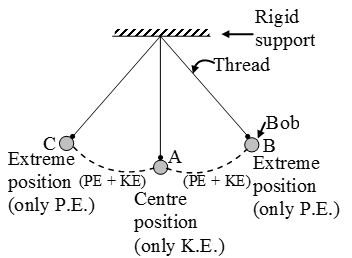Different Forms Of Energy
The change of one form of energy into another form of energy is known as transformation of energy.
- Heat energy: Burning of fuels like diesel or petrol in vehicles provides heat energy to do work.
- Electrical energy: Electric motors are used in home, industry and even for driving electric trains.
- Light energy: When light energy falls on light-meter used in photography, it causes its pointer to move across a scale.
- Sound energy: Sound energy causes a thin plate of microphone diaphragm to vibrate.
- Chemical energy : Chemical energy is the source of energy in our food and it provides us energy to move the various objects.
- Nuclear Energy: The energy in the nucleus of an atom is used to produce heat energy which in turn is used to generate electrical power.
Device Used | Energy Tranformation | |
| Form | To | |
Steam Engine | Heat | Mechanical |
| Electric Fan | Electrical | Mechanical |
| Electric Lamp | Electrical | Light And Heat |
| Electric Heater | Electrical | Heat |
Microphone | Sound | Electrical |
| Solar Cell | Solar Heat | Electrical |
Photo-Cell | Light | Electrical |
| Car Engine | Chemical | Heat, Mechanical |
| Electric Cell/Batteries | Chemical | Electrical |
Law of conservation of energy
Energy can neither be created nor be destroyed, it can only be changed from one form to another. Appearing amount of energy in one form is always equal to the disappearing amount of energy in some other form. The total energy thus remains constant.
A swinging simple pendulum is an example of conservation of energy:

This is because a swinging simple pendulum is a body whose energy can either be potential or kinetic, or a mixture of potential and kinetic, but its total energy at any instant of time remains the same.
- When the pendulum bob is at position B, it has only potential energy (but no kinetic energy).
- As the bob starts moving down from position B to position A, its potential energy goes on decreasing but its kinetic energy goes on increasing.
- When the bob reaches the centre position A, it has only kinetic energy (but no potential energy).
- As the bob goes from position A towards position C, its kinetic energy goes on decreasing but its potential energy goes on increasing.
- On reaching the extreme position C, the bob stops for a very small instant of time. So at position C, the bob has only potential energy (but no kinetic energy).
